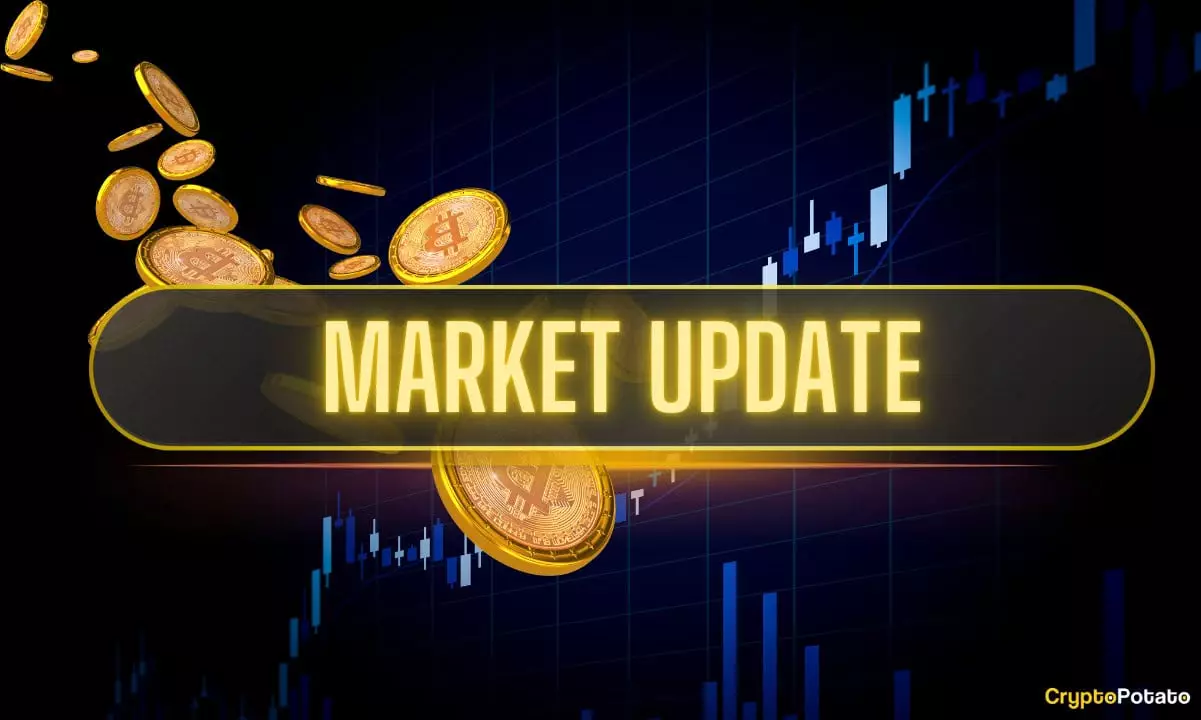The cryptocurrency landscape is currently reflecting a tempest of uncertainty, primarily driven by external economic influences rather than internal market sentiment. President Donald Trump’s aggressive trade policies set a chaotic tone in financial markets, including cryptocurrencies. These developments are not just a blip on the radar; they represent a significant break from the expected continuity and stability that traders typically rely on. As cryptocurrencies handle volatility with varying degrees of resilience, it’s essential to analyze the ongoing turbulence and what it means for the future.
The Trade War’s Ripple Effect
Ever since the U.S.-China trade war erupted, cryptocurrencies like Bitcoin have been pathologically reactive. After Trump announced a blanket tax increase stimulated by trade tensions, Bitcoin experienced a ghastly ride from an initial price range of $82,000 to a staggering low of around $74,000 within a matter of days. These absurdly swift fluctuations expose the inherent fragility of digital currencies that many investors have pinned their hopes on as alternatives to traditional assets.
In this new paradigm of taxation, with Bitcoin’s price swinging wildly based on rhetoric surrounding tariffs, we witness the correlation between geopolitics and crypto prices become alarmingly clear. When the fabric of global trade is threatened, financial markets respond in maltreated anguish, and cryptocurrency remains among the most vulnerable. This correlation illustrates not only the volatility but also the vulnerability of these digital assets to policy changes that seem minute in a broader economic view yet bear profound implications.
Ethereum’s Crash: Lessons in Over-Optimism
Ethereum, often viewed as Bitcoin’s younger sibling, has borne the brunt of this storm, mirroring his price volatility but with sharper declines. As Ethereum crashed to a mere $1,400, losing 77% of its value against Bitcoin since its pinnacle in 2021, the fabulist narratives surrounding its rise have started to evaporate. Investors have been led to believe that Ethereum is on an unstoppable trajectory, only to watch as it succumbed to the pressures of market realities.
Despite bullish predictions from analysts, the dismal short-term performance should serve not only as a cautionary tale but as a clarion call for over-optimism in this speculative environment. While some believe Ethereum’s performance will soon rebound, the harsh lesson is that cycles do not favor sentiment alone; they are governed by a multitude of financial variables and the unforgiving nature of market cycles.
Impact of Government Policy on Market Dynamics
The actions taken by Trump’s administration—ranging from tariff hikes to sudden shifts in policy—underscore how closely intertwined state actions are with market performance. Such abrupt measures can incite panic or fleeting moments of hope, as witnessed when Bitcoin surged back to over $83,000 following a temporary pause in tariffs.
If the outcome of these maneuvers is to create speculative bubbles within crypto markets, it raises a significant concern regarding sustainability. The lack of a grounded financial rationale for price movements in response to governmental actions signals deeper issues within the cryptocurrency economy. The absence of intrinsic value indicators means that traders remain at the mercy of external events rather than the fundamentals that have historically driven markets.
Future Predictions: Speculation or Reality?
In an atmosphere where speculation reigns supreme, the bullish projections concerning Bitcoin reaching $250,000 by the end of next year may feel audacious. Why should anyone take these claims seriously, especially after the market’s recent upheavals? Financial commentator Arthur Hayes insinuates that either the U.S. Federal Reserve or China’s central bank may offer a much-needed catalyst for a Bitcoin boom.
While such predictions have their enthusiasts, they should be taken with skepticism. The belief that central banks will provide a lifeline to cryptocurrencies exemplifies a reliance on external forces rather than internal market fundamentals. If anything, the upcoming months may reveal whether cryptocurrencies can weather the storm independently of government intervention or whether they are just pawns in a larger global game of economic chess.
The recent instability in the crypto markets cannot be understated. The ongoing trade war complications, the unpredictable reactions of cryptocurrencies, and the overarching influence of government policies all paint a picture of tumult. The marketplace remains rife with opportunities, yet these opportunities come with the heavy burden of caution. Those navigating these uncharted waters will need to cultivate a resilient mindset, recognizing the pivotal role of external factors while seeking to grasp the ever-evolving dynamics of cryptocurrency.

